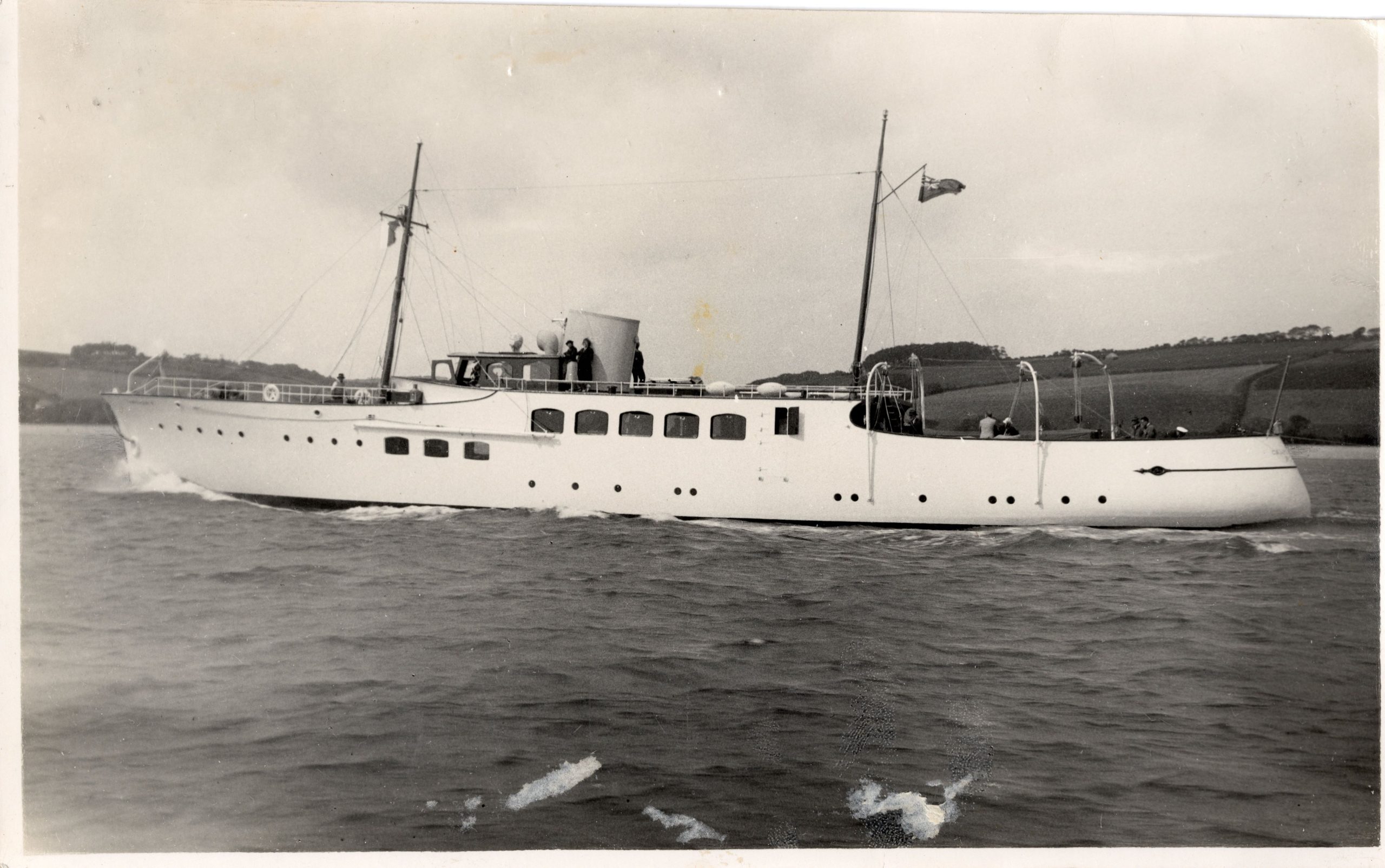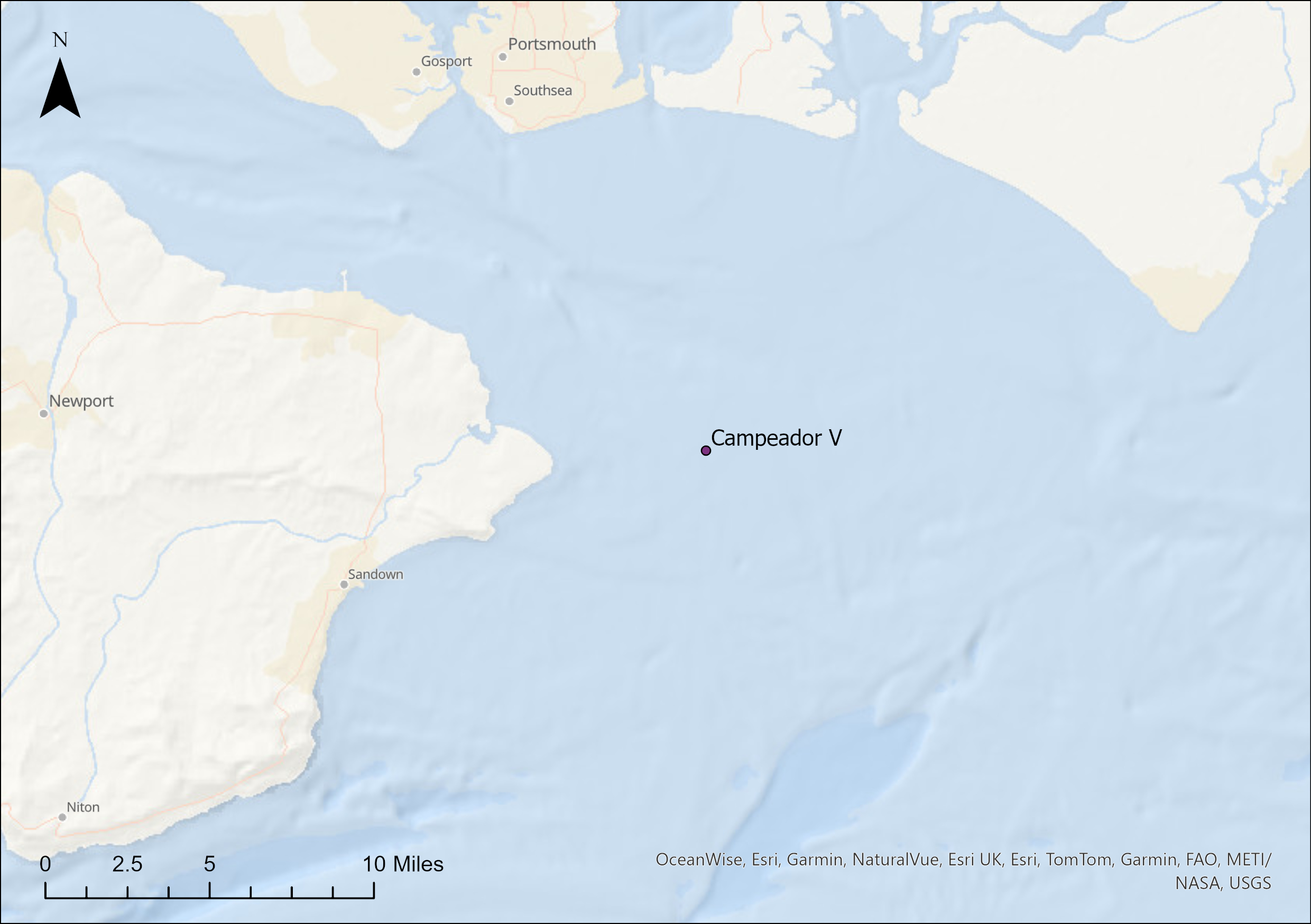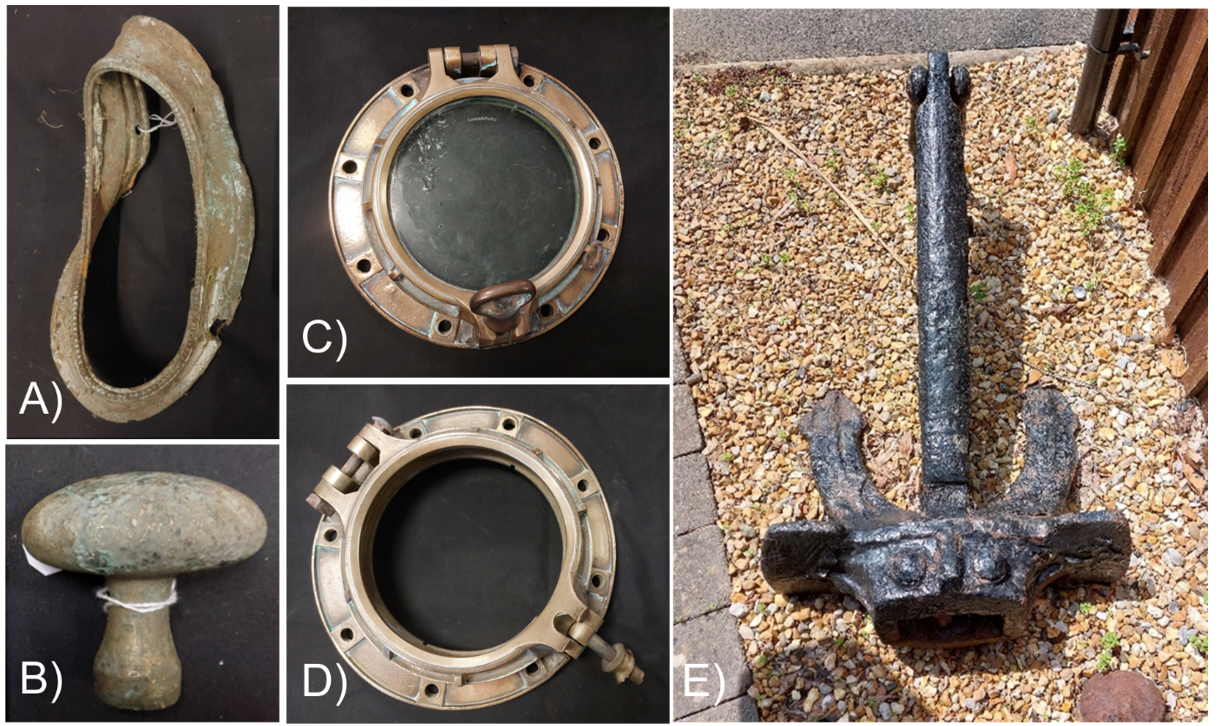Volunteer Roger Burns explores how the Campeador V luxury motor yacht transformed into an anti-submarine patrol vessel and gained an affectionate reputation for its operational service before it was tragically lost in June 1940.
The Campeador V was built during 1937/38 by Philip & Son at Dartmouth, and launched from their yard on 16 June 1938 for Vernon W. MacAndrew, Ravensbury, Dartmouth. 36.6m long, with 6.1m beam and 2.44m depth, it was constructed of steel, having an Upper Deck, with Cabin and Second Decks, and the floors covered in Borneo white hardwood, resulting in a large deck saloon amidships, a deck shelter, together with apartments for the owner and guests. Cabins and rooms were made from mahogany and oak, and the galley included a Aga cooker, and pantry with a fridge. Its twin screws were powered by two diesel engines of 16 cylinders each manufactured by Gleniffer of Glasgow. 16 ton diesel and 12 ton fresh water tanks were incorporated into its lower hull, and its equipment included an echo sounder and two motor launches carried on its aft deck, the launches hardly visible between the davits in Figure 1. Also on deck were an electric windlass and a warping capstan. The yacht was designed by Norman Hart and it was classified by Lloyd’s as 100A1.

Figure 1: MV Campeador V
Source: Courtesy of the Dartmouth Museum’s Cyril King Archives
Trials were satisfactory, held on 18 August, reaching 13.55 knots with diesel consumption of 15 gallons at 12 knots and it was regarded as a comfortable cruising boat, suitable for living aboard during the yacht racing season, in which the owner was an accomplished racer aboard his 12-metre sailing yachts. The owner originally hailed from Forsinand, a hamlet in Sutherland, later an owner of his Liverpool based shipping line which he sold in 1922, moving to Dartmouth where, at the same time as Campeador V was being built, he started a lauded seamanship training scheme for young people.
Shortly after its trials, the Campeador V was logged passing the Lizard in a westerly direction and then during June 1939, the yacht visited Las Palmas, Madeira, and Porto Santo.
When war was declared on 01 September 1939, Vernon MacAndrew and his co-sailers offered the Campeador V to the Admiralty, and to crew it. The Admiralty accepted, requisitioning the yacht. A W/T set was added, with a deck gun and other equipment, and the luxury yacht, hired at £60/month (c.£3.4k in 2025), became HMS Campeador V assigned to the Portsmouth 81st Anti-Submarine Group as an Auxiliary Patrol Vessel, pennant FY002. Remarkably, MacAndrew who was 59, a C.E. Turner also 59 who was a docks superintendent, and 67 year old retired surgeon Rear-Admiral J.R. Muir, Croix de Guerre, were each appointed Sub-Lieutenants aboard HMS Campeador V. Appointed on 15 September 1939, the Commander was 60 year old Charles. H. Davey, OBE who had retired from the Navy some years previously and was master of the Dartmoor foxhounds. The remainder of the 22 strong crew were RN personnel. The Portsmouth 81st Anti-Submarine Group included three requisitioned yachts, Campeador V, Rion and Wilna in 1940, with Star of India in 1941.
Operating within the Solent and Isle of Wight areas, HMS Campeador soon became well known among the Portsmouth naval fraternity, and was christened “The Gallant little Campeador”. During the first 95 days of the war, it remained at sea for 84 days, refusing to go into port to undertake repairs which they performed themselves at sea. At night, they would necessarily sail without lights, and with the landward lights subject to black out, conditions during the winter were often arduous, requiring constant vigilance on deck whatever the weather. These winter conditions were compounded by the vessel not having been designed for winter service and was without effective heating. This dedication and diligence precipitated a recommendation for promoting Lieutenants MacAndrew and Muir, and reaching Winston Churchill, he reportedly wrote on the recommendation “Promote them, age will be served”.
Following return to port for a refit, the Campeador V was again at sea. Sadly, on 22 June 1940, it struck a German magnetic mine, laid the previous night, some three miles NNW from the Nab Tower.

Figure 2: Location of the wreck of the Campeador V.
The Campeador V sank with the loss of 20 of its 22 crew, the other two, a leading seaman and an assistant steward, being wounded and picked up by the Wilna. Casualty commemorations were established, there being four each at Liverpool, Portsmouth and Plymouth Naval Memorials, five at Haslar Royal Naval Cemetery, and one each at Lowestoft Naval Memorial, Brighton City Cemetery, and Southampton Crematorium.
A few years later, the stern of the Campeador V was beached near Bembridge on the Isle of Wight, where during the 1950’s it was dismantled. The bow section, heavily damaged, was in 1985 lying on its side covered in marine growth, with a small gun lying nearby. Some recovered artefacts, Figure 3, are on display at the Shipwreck Centre and Maritime Museum on the Isle of Wight.

Figure 3: HMS Campeador V Recovered Artefacts
Figure 3A – Lamp surround
Figure 3B – Door knob
Figures 3C & D – Portholes
Figure 3E – Anchor
In 1941, “The Gallant Little Campeador” was published based on letters sent to Cecil Hunt, the author, by John Muir and Sidney Brimilcombe before they perished on 22 June 1940, and by a survivor, HH Yersin, and also by the commander of the Wilna.
